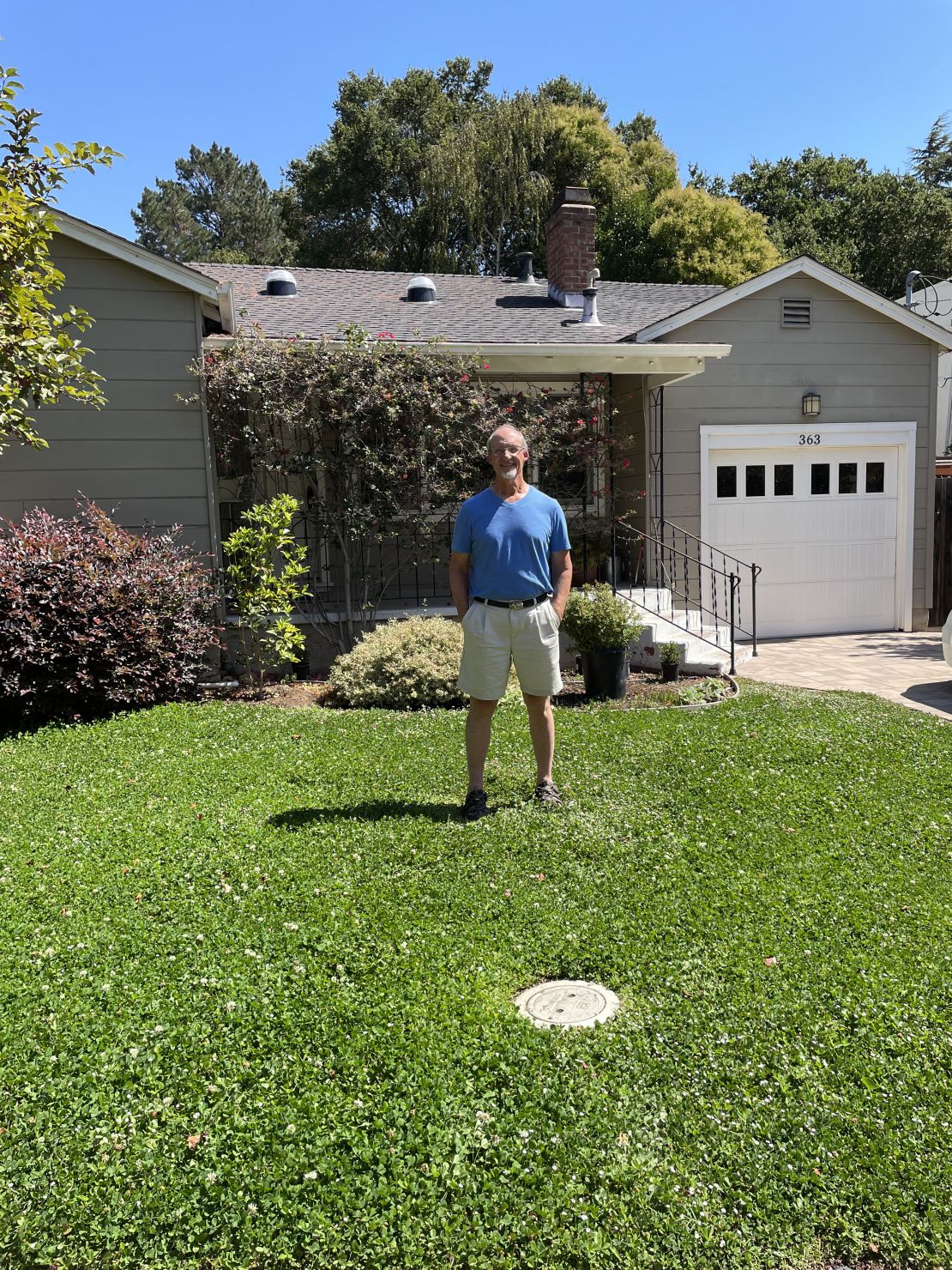Editor’s Note: Christian Vescia is an instructional designer for a San Francisco fintech company and an avid gardener. The views expressed here are his own. Read more opinion at CNN.
A few months ago, I said goodbye to the lawn in front of our house. In my city of San Carlos, California, a lot of people are modifying their landscaping to reduce water use and a lush carpet of grass – while not quite a thing of the past – is becoming less common. My wife and I wanted to do our part too, but weren’t ready to implement a full-on xeriscape solution with succulents and desert plants.
Like a lot of places, we’re facing the obvious impacts of climate change here in the San Francisco Bay Area. Over the Labor day weekend, a heat wave sent the thermometer up to a scorching 108 degrees, 20 or more degrees Fahrenheit above normal. We’re also in the grip of another multiple-year drought. In fact, 2022 has been the driest year on record in California. Wildfires raging across the state are another reminder of just how severe that drought has become.
So as beautiful as a plush carpet of grass can be, we couldn’t justify using the hundreds of gallons of water required to maintain the three lawns we have on our property: a front lawn, a back lawn and a third lawn on an upper terrace in our backyard.

Our family has always been conscientious in our use of water: it affects how we take showers (short), do the dishes (not letting the water run and cascading rinse water into an adjacent pot to re-use), and wash our produce (transporting water from washing lettuce and vegetables to water plants the garden).
Climate change is causing me and many of our neighbors to look for even more ways to conserve water. The next step for me, as an avid gardener, was to look for ways to save water in the garden – starting with getting rid of most of our grass.
In some parts of California that have been even harder hit by drought than we have, residents are being paid by the square foot to remove their lawns. Even without that kind of rebate, some homeowners in my area are full on taking out the front yard, putting in succulents – not just a low-water, but almost a no-water solution, putting in plants like cactus and agave. I wasn’t convinced, however, that that would go well with the rest of our garden. We have a crabapple tree in the front and other evergreen shrubs and plants that come from the desert would look out of place together with those plants.
We decided to replace our front lawn with a low-water ground cover and remove our smaller back lawn entirely. In the back we installed a crushed gravel patio where we can have meals outside in the garden. We kept a moderate-sized lawn in place at the top of our backyard, where we like to sit in the evening on our own or with guests.
To be honest, removing the front lawn was not only about saving water. I’d also come to feel that maintaining a lawn was a hassle: I was tired of mowing it every other week. And, since I’ve never been a fan of the weed whacker, edging the lawn required getting down on my hands and knees with shears to give it a trim. I was happy to say goodbye to all of that.
My wife Lucia and I researched several different types of no-mow lawns that use different sorts of grasses. However, many of those didn’t work very well with our existing landscaping. We also investigated drought-tolerant ground covers. Eventually, based on the suggestion of some friends – one of whom used to work for a municipal water service – we decided to plant a ground cover that originated in Asia, called kurapia that is drought tolerant and uses significantly less water than a traditional lawn – as much as 80% less according to some studies.
I’ve read that kurapia roots eventually go down 5-10 feet, so it holds up well in a drought. It grows to about 2 to 3 inches tall, is nice and green and has attractive small white flowers. You can mow it if you’d like to encourage it to grow a little bit more densely, but that might be the kind of thing you do once or twice a year, if at all.
A lot of people don’t like non-native plants, which they fear will become invasive and hard to eradicate where they’re not wanted, but kurapia is sterile and has been germinated not to spread where it’s not planted. We’ve had a lot of people asking about it as they stroll around the neighborhood. Most are looking for alternatives to maintaining a water-thirsty lawn or having a dead patch of ugly brown grass in front of their homes.
Making the switch from grass to this ground cover wasn’t inexpensive. The plants needed for my 1,000 square-foot front yard cost around $900 and my landscaper took a day or more to install them. However, we expect to recoup some of that expense by lowering our water bills as a result of replacing or eliminating most of the lawns. Now that we’ve made the switch, I love the fact that I don’t have to stalk back and forth across the lawn every two weeks behind a noisy mower. Most of all, I feel good about using less of our precious water resources.
It’s important for all of us in the western United States to know where our water comes from. Once you do, you realize how we regularly have to make difficult tradeoffs between the three main uses of our water: agriculture, municipal water use and sustaining a healthy environment. Once you become aware of the limits of our supply, the critical importance of conservation stands out and it motivates you to look for new ways to reduce your water use.
Besides conserving water in the garden, we also do what we can in the house. We have a recirculation pump we turn on with a wireless remote before taking a shower that forces hot water through the pipes to our bathrooms. That way, we don’t have to run gallons of water down the drain while we wait for the water to heat up. We take advantage of our county-level conservation programs too. For example, we made use of a $300 rebate from the county to help replace our old washing machine with a modern, front-loading model that uses much less water. The rebate reduced the cost of the machine by nearly 30%. The new machine even weighs the laundry before the cycle to determine how much water is needed for the size of the load.
Get our free weekly newsletter
Between our nice, green, no-mow ground cover in the front, and our new gravel patio in the back, we’re very happy with our new yards and reduced water use. For the back, we’ve ordered a nice, extendable outdoor table so we can eat outside.
Now that I’ll soon be entering my retirement, one of the things I’m looking forward to is cooking big meals, having friends over and dining al fresco on my back patio of my garden – now almost entirely free of grass.






